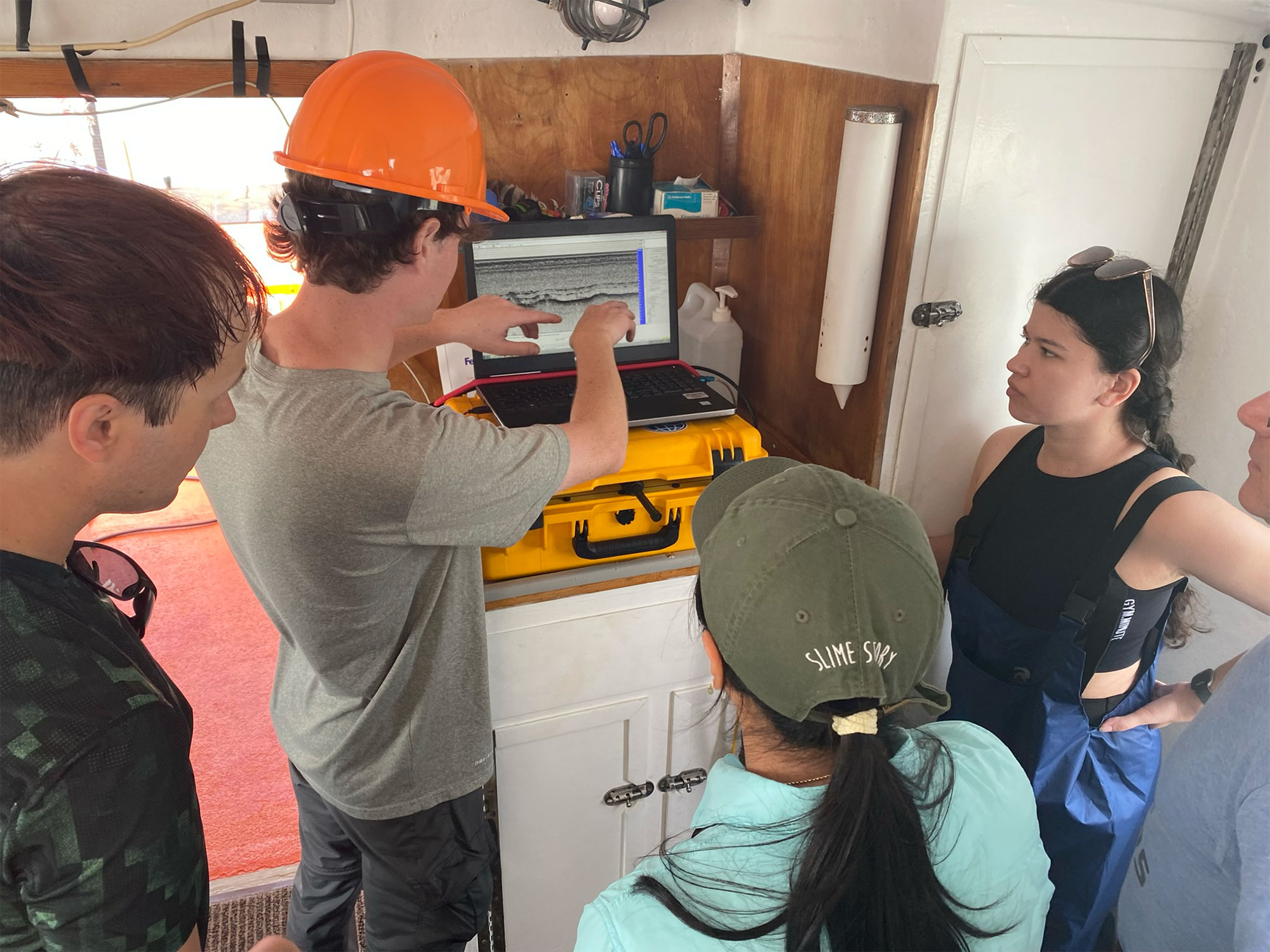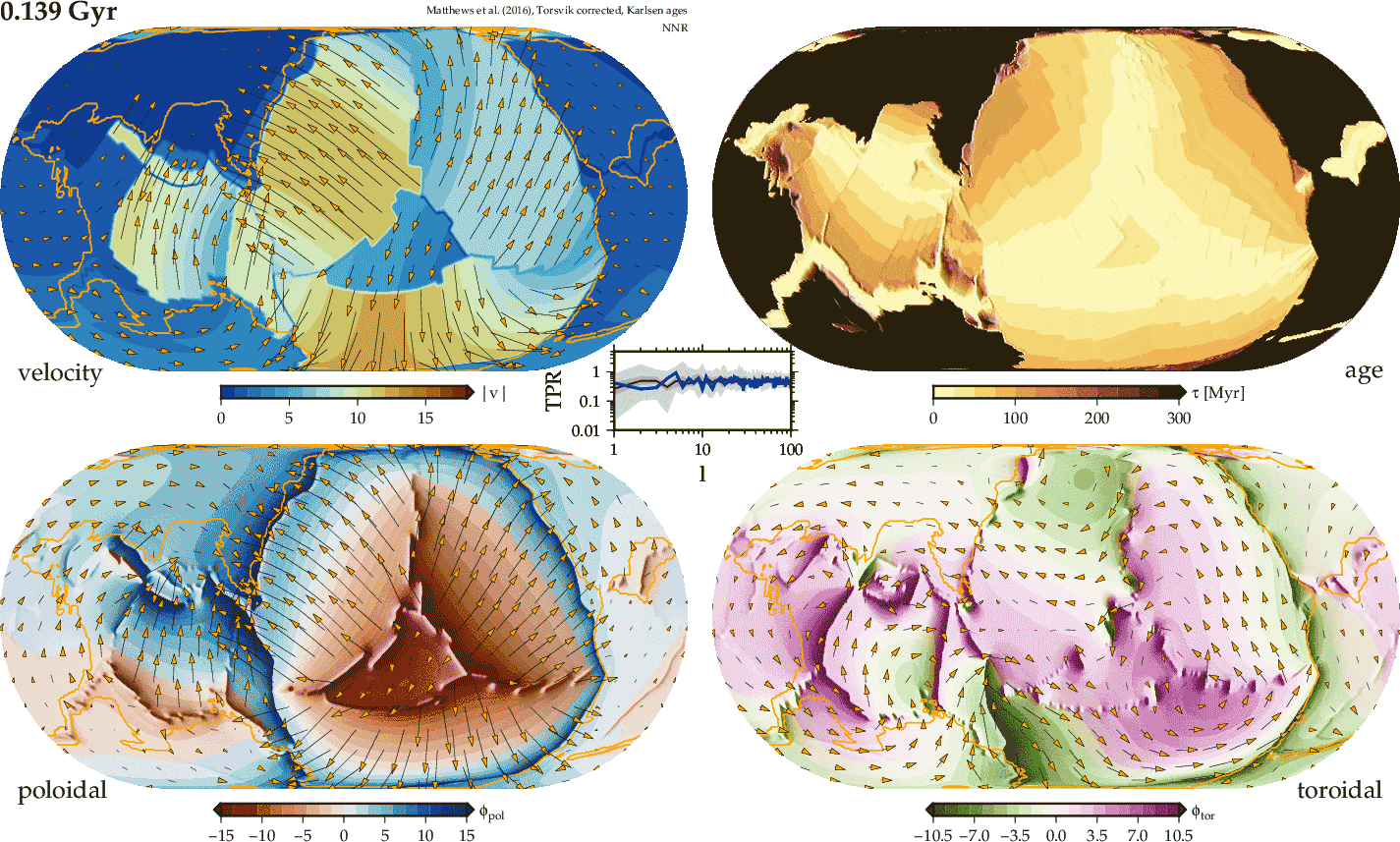B.S. in Geophysics

B.S. in Geophysics
The Geophysics major prepares students to explore the structure, dynamics and evolution of the Earth and other planets. It will provide students with a solid foundation in seismology and geodynamics as well as exciting applications in natural hazards, resource exploration and environmental monitoring. Geophysicists specialize in imaging the subsurface and interior of the Earth and the modeling of Earth and planetary processes.
Why geophysics?
Geophysics combines adventurous field work and sophisticated experiments with cutting-edge techniques in data science and powerful tools in computational modeling. The core of geophysics is real-world, quantitative problem solving. This allows geophysicists to tackle important societal problems, including understanding of earthquake hazards and their mitigation, remote sensing of the environment, exploration for critical minerals in the energy transition or the stability of the ice caps and predictions of future sea-level rise. Geophysicists also try to answer fundamental and profound questions about the origin and evolution of the Earth and other planets. For example: Why does only the Earth have plate tectonics and how did it get started? What caused the ice ages? What drives the volcanism beneath Yellowstone National Park?
What do geophysicists do?
From global studies to microscopic scales, and from processes happening on timescales of seconds to billions of years, geophysicists contribute fundamental insights into properties of the Earth. Geophysicists acquire data, image the Earth, model processes from the atmosphere to the inner core, and monitor hazards from earthquakes to tsunamis, whether naturally occurring or induced by human activity.

Career and graduate school opportunities
The geophysics major emphases analytical reasoning, computational problem solving, uncertainty quantification and high-tech sensing and monitoring. These skills are highly transferrable and an excellent preparation for both advanced graduate study and exiting careers in the private sector as well as government agencies. With a geophysics degree, students are well equipped to solve cutting-edge problems in a wide range of disciplines, from fundamental Earth, climate and planetary science research, to applications in the energy sector, critical minerals, data science and technology, and national security.
Graduate school disciplines students will be ready for
- Geology
- Geophysics
- Geoscience
- Planetary Science
Industries hiring geophysicists
- Machine learning, data science, AI
- Energy and mining
- Tech
- Government labs
- National security
- Reinsurance and risk assessment consulting
- Space and aeronautical companies
Wage data for related jobs
$87,480
Geoscientists
$97,490
Mining and Geological Engineers
$103,500
Data Scientists
$76,480
Environmental Scientists
Median annual wage data courtesy of the Bureau of Labor Statistics
Research opportunities
Geophysics majors have the opportunity to conduct research with top scientists from all three of the Jackson School’s units — the Department of Earth and Planetary Sciences, the Institute for Geophysics, and the Bureau of Economic Geology. Students can explore questions about earthquakes, geomechanics, planetary science, energy applications and geodynamics. At UTIG, students can contribute to the Megathrust Modeling Framework (MTMOD), the Gulf of Mexico Basin Depositional Synthesis (GBDS) project, and at the Bureau, they can join the teams conducting earthquake monitoring.
All Jackson School undergraduates have an abundance of research opportunities at their fingertips. Explore more on our Undergraduate Research page.
Degree requirements
Every Jackson School undergraduate is required to take foundational courses that cover the breadth of the geosciences, along with advanced courses specific to their major. Students will explore these fields, advancing their quantitative reasoning skills, developing computational literacy, applying geospatial tools, and learning how to manage, evaluate, and visualize data.
Geophysics foundation courses
These are the courses every geophysics major is required to take.
Geophysics component
These upper-division courses prepare students to understand and examine the foundations of geophysical phenomena. Take at least 17 credits (six classes).
- GEO 114G: Geophysics Colloquium
- GEO 325C: Continuum Mechanics
- GEO 325K: Computational Methods or GEO 325M Numerical Modeling in the Geosciences
- GEO 354: Physics of Earth
- GEO 365P: Potential Field Applications in Geophysics, GEO366M: Mathematical Methods in Geophysics, and/or 465K: Seismic Exploration.
Immersion learning
These are intensive three-week courses where you will learn by doing. Take six credits (two classes).
- GEO 660A: Interpretation of Sedimentary and Volcanic Environments in the American West
- GEO 660B: Interpretation of Structures, Basins, and Landforms in the Rocky Mountains
- GEO 348K: Marine Geology and Geophysics Field Course
- GEO 376L: Field Methods in Groundwater Hydrology
- GEO 661: Geophysics Field Camp
- GEO 679G: Special Studies in Geophysics Research, Fieldwork, or Internship
Disciplinary fundamentals
You will dive deeper into the fundamentals of the topics and sub-disciplines you are most interested in. Take 6 credits (two classes) of any upper division geological science courses.
Geoscience courses
These are the courses required of all Jackson School undergraduates. They will typically be completed within the first two years of study.
Introduction to earth and planetary science
Learn if geosciences is right for you, and choose any class you like. Take at least three credits (one class).
- GEO 401: Physical Geology
- GEO 302C: Climate: Past, Present, Future
- GEO 302D: Dinosaurs
- GEO 302E: Earth, Wind, and Fire
- GEO 302G: Earth Science/Sustainability
- GEO 302J: Crisis of Our Planet
- GEO 302M: The Age of Mammals
- GEO 302N: National Parks
- GEO 302Q: Gems & Minerals
- GEO 303: Introduction to Geology
- GEO 303C: Intro Solar System
- GEO 303E: Earth in 2100
Experiential learning
Hone your skills in observation, data gathering, and interpretation. Take at least three credits (one class).
- GEO 310T: Geodata
- GEO 315L: Earth from Lab to Planet (recommended)
Disciplinary breadth
These courses span all aspects of the geosciences, and provide you the foundation for more advanced study in your area of interest. Take 12 credits (all three classes).
- GEO 416E: Solid Earth Processes
- GEO 416S: Integrating Earth & Planetary Processes Through Time
- GEO 416W: Climate, Water, and the Environment
Quantitative analysis
Develop your skills in the quantitative analysis of geosciences data and theories. Take at least three credits (one class).
- GEO 325G: Computational Applications in the Geosciences
- GEO 352P: Python for Geoscience Research
- GEO 378D1: Introduction to Machine Learning and Geosciences
- PGE 338: Geostatistics and Data Analysis
Building block courses
These courses take place outside of the Jackson School and are required of all geophysics majors. This major requires a robust understanding of mathematics, physics, and chemistry to prepare students for advanced classes specific to the degree.
Mathematics
Take the classes listed below, choosing either Option 1 or Option 2.
- M 427J: Differential Equations with Linear Algebra
- M 427L: Advanced Calculus for Applications II
- Option 1:
- M 408C: Differential and Integral Calculus
- M 408D: Sequences, Series, and Multivariable Calculus
- Option 2
- M 408L: Integral Calculus
- M 408M: Multivariable Calculus
- M 408K: Differential Calculus
Physics
Take the classes listed below, choosing either Option 1 or Option 2.
- PHY 315: Wave Motion and Optics
- PHY 115L: Laboratory for Physics 315
- Option 1:
- PHY 301: Mechanics
- PHY 101L: Laboratory for Physics 301
- PHY 316: Electricity and Magnetism
- PHY 116L: Laboratory for Physics 316
- Option 2:
- PHY 303K: Engineering Physics I
- PHY 103M: Laboratory for Physics 303K
- PHY 303L: Engineering Physics II
- PHY 103N: Laboratory for Physics 303L
Chemistry
Take at least six credits (these two classes; labs are not required).
- CH 301: Principles of Chemistry I
- CH 302: Principles of Chemistry II
Read more about these courses in the University of Texas course catalog.
The 2024-2026 geophysics degree plan is available on the University Catalogs website.
Past degree plans: 2022-2024 | 2020-2022 | 2018-2020 | 2016-2018 | 2014-2016
Complementary minors
Geophysics majors can select any minor available to University of Texas undergraduate students. Here are a few that we recommend pairing with a geophysics degree in order to further your expertise in related subjects such as energy, sustainability, and policy.
- Leadership in Global Sustainability
- Public Policy
- Energy Management
- Sustainable Energy
- Energy Management
Next steps: Applying and transferring
Ready to start changing the world? If you’re a high school student interested in applying to the Jackson School to be a geophysics major, please select Geological Sciences during the process of your undergraduate application to The University of Texas at Austin. Additional application information can be found on the UT Office of Admissions website and the Jackson School’s Admissions page.
Thinking of transferring to the Jackson School to be a geophysics major? If you’re an undergraduate student already enrolled at The University of Texas at Austin, you may enter the Jackson School through an internal transfer process which occurs twice a year. Please visit the Jackson School’s Internal Transfers webpage for details about the internal transfer process, deadlines, and upcoming information session dates to learn more about our school and programs. We also encourage you to contact academic advising before you start this process.

These animations of continental drift and seafloor spreading show velocity amplitudes (NNR frame), reconstructed age, poloidal, and toroidal surface velocities.
Matthews et al. (2016), corrected for Torsvik et al. (2019), ages computed by Krister Karlsen, reconstruction provided by Clint Conrad